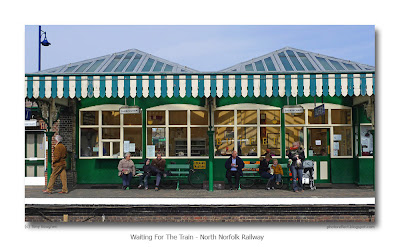 click photo to enlarge
click photo to enlargeWhen I used 35mm film cameras I never thought twice about the aspect ratio of the format: the fact that 36mm X 24mm is a ratio of 3:2 was something I just didn't consider. Processing my own black and white photographs I would sometimes crop the image (with a guillotine) to make a better composition, but doing this was very much the exception.
When I started to use a digital camera in 2000 it also had an aspect ratio of 3:2, and once again I thought little of it, perhaps because it was familiar to me. However, processing the images on a computer led me to crop many more images than I did when I used negatives and an enlarger. This may have been because it was so much easier. But, when I acquired an Olympus DSLR and found the aspect ratio was 3:4 then I did start to think more about these things. I find that I have a strong preference for 3:4 over 3:2 in landscape format, but occasionally prefer the latter in portrait format. It's purely a personal thing, and I don't believe there are any objective reasons (golden section included) to choose one over the other. The Panasonic LX3 offers an embarrassment of riches in this regard - 3:4, 3:2, 16:9 and 1:1 - all of which can be used at the time of composition. Looking back over my images made using this camera I find that I use 4:3 for about 75% of my shots, 16:9 for about 15%, 1:1 for almost all the others, and 3:2 rarely. I think I use 4:3 as the default because it is a rectangle that I prefer more than 3:2, and it suits many shots. 1:1 is a format I like to compose in (though I know many hate it), and I think it is perfect for some subjects. My reasonably heavy use of 16:9 is the one that surprises me. When I first got the camera I ignored it, but gradually I've come to use it quite a bit, especially for landscapes, but also for shots such as today's.
This image, taken at the preserved railway at Sheringham in Norfolk, reminds me of one of those Victorian paintings that shows an urban scene peopled by a group of contrasting characters: the sort of piece that the eye lingers over, searching out details. I looked at this scene with 3:4 selected, but immediately switched to 16:9 because it just seemed the obvious choice for filling the frame with interest.
photograph & text (c) T. Boughen
Camera: Lumix LX3
Mode: Aperture Priority
Focal Length: 8.8mm (41mm/35mm equiv.)
F No: f4.5
Shutter Speed: 1/1000
ISO: 80
Exposure Compensation: -0.33 EV
Image Stabilisation: On